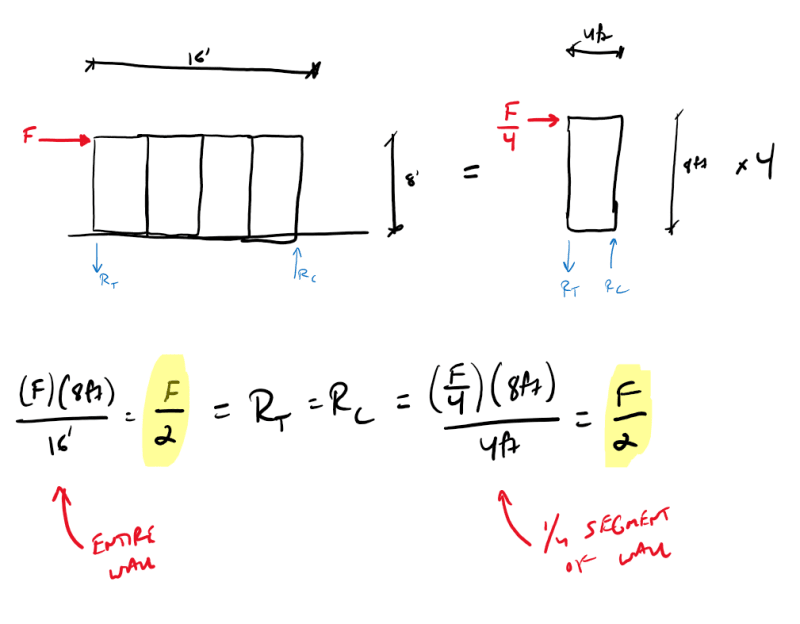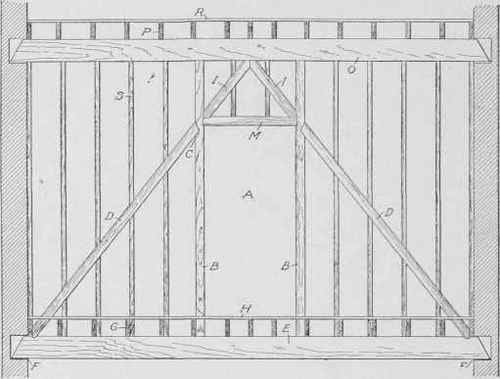JeffCastillo
Structural
Hello:
I have called our for an interior shearwall on a commercial shop that will be used to fix cars. It is stick-framed and I needed to call out an interior shearwall for a partition wall that seperates two garages. It is not load bearing or anything, and the only reason I called out for a footing under is for I called it out to be a shearwall. I used the perforated method, as there was a door in the far right of the wall but I still met the aspect ratio, however, the concrete guys did not pour a concrete footing under the 5.5" slab. I can't find anything in the code that requires a footing under a shearwall, but I wanted to see if it is somewhere in the code that I can't find to justify that we do need a footing under shearwalls?
I know we need to have anchorage into the mudplate, where we can use red head concrete anchorage to go into the slab to hold the mudplate down to the floor and there will be STHD14 straps on the ends of the wall, but is a footing required per code?
I have called our for an interior shearwall on a commercial shop that will be used to fix cars. It is stick-framed and I needed to call out an interior shearwall for a partition wall that seperates two garages. It is not load bearing or anything, and the only reason I called out for a footing under is for I called it out to be a shearwall. I used the perforated method, as there was a door in the far right of the wall but I still met the aspect ratio, however, the concrete guys did not pour a concrete footing under the 5.5" slab. I can't find anything in the code that requires a footing under a shearwall, but I wanted to see if it is somewhere in the code that I can't find to justify that we do need a footing under shearwalls?
I know we need to have anchorage into the mudplate, where we can use red head concrete anchorage to go into the slab to hold the mudplate down to the floor and there will be STHD14 straps on the ends of the wall, but is a footing required per code?


